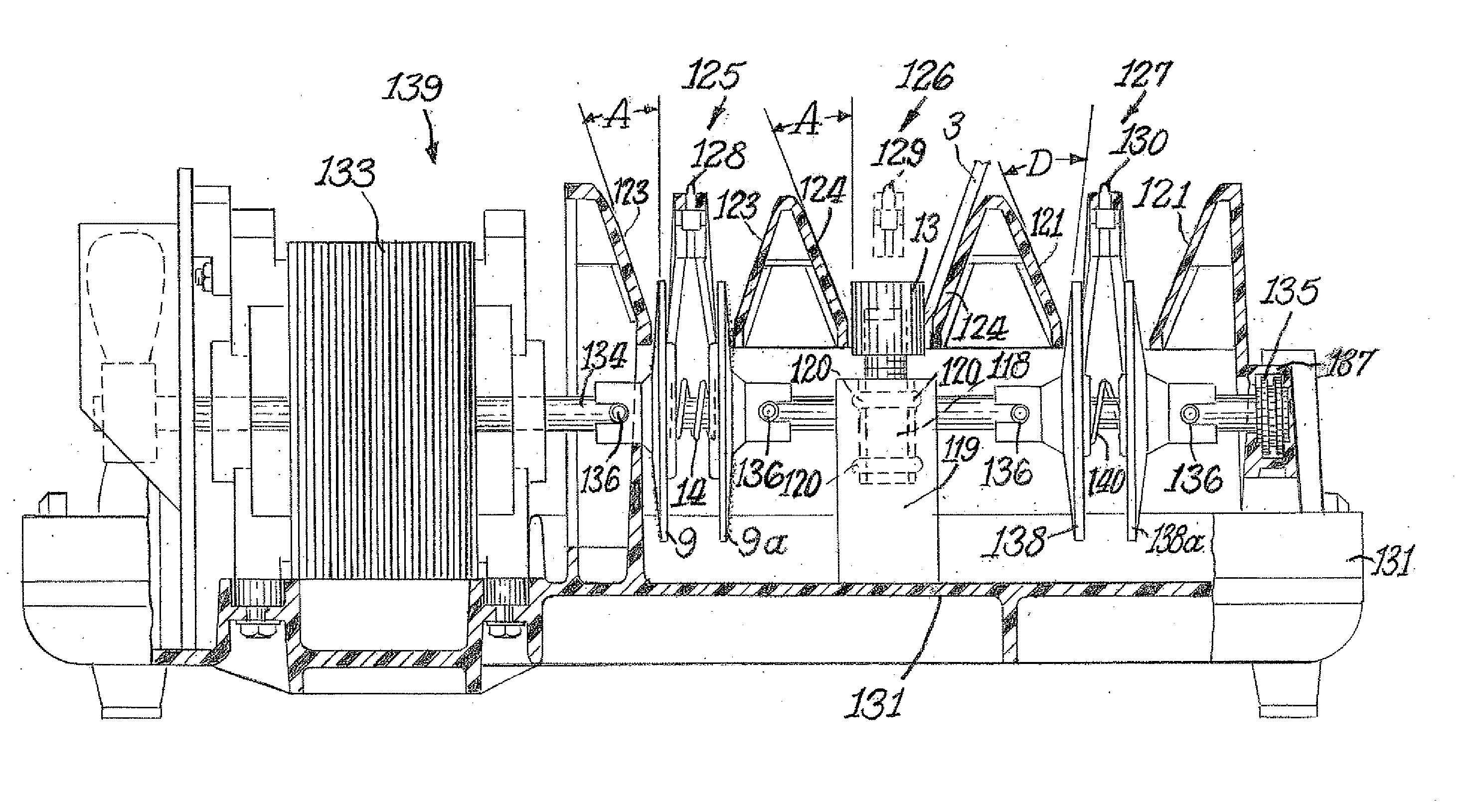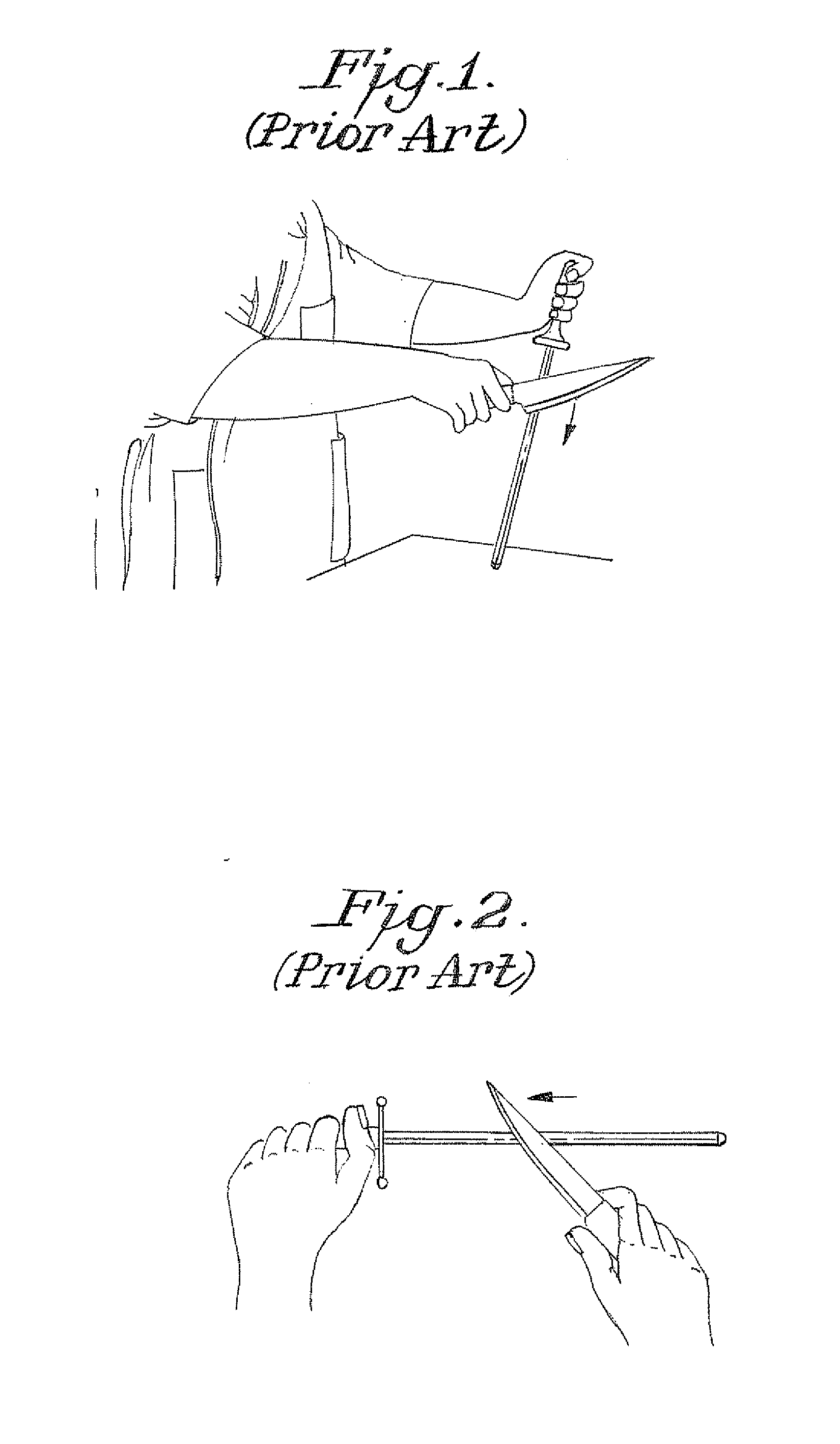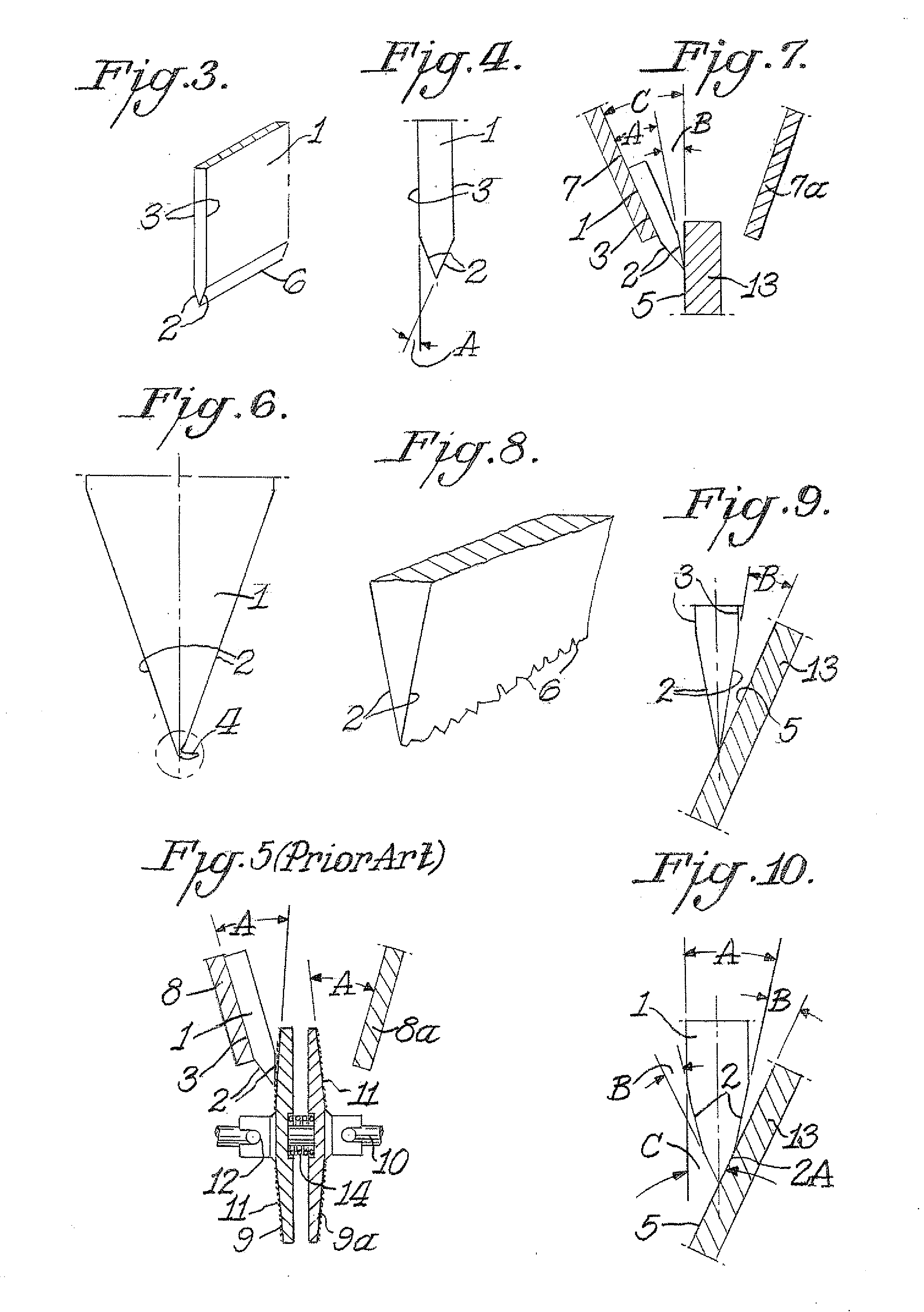Apparatus for precision steeling/conditioning of knife edges
a technology for conditioning and precision steeling, which is applied in the field of apparatus for conditioning precision steeling/conditioning of knife edges, can solve the problems of not becoming popular with the general public, lack of precision and reproducibility of prior methods of steeling knife edges, and poor understanding of knife blades. , to achieve the effect of improving the cutting ability of dull knife edges, reducing the risk of injury, and high degree of skill and practi
- Summary
- Abstract
- Description
- Claims
- Application Information
AI Technical Summary
Benefits of technology
Problems solved by technology
Method used
Image
Examples
Embodiment Construction
[0026] Conventional manual so-called “sharpening” steels are usually constructed with a handle by which the steel rod can be held or supported. The steel is often held end-down against a table or counter by one hand as in FIG. 1 prior art) while the knife is held in the second hand and stroked simultaneously across and down the surface of the steel. Neither the angle of the steel or the angle of the blade across the steel is accurately controlled. Each can vary stroke to stroke or drift in angle during the steeling process and between successive steeling. Alternatively the sharpening steel is held in the air FIG. 2 (prior art) without support as the steel knife blade is moved across and along the surface of the steel. This latter approach offers even less control of the relative angles between the planes of the edge facets and the plane of the contact point along the steel, The sharpening steel has proven to be a poor haphazard and inconsistent tool for improving the cutting ability...
PUM
| Property | Measurement | Unit |
|---|---|---|
| angle | aaaaa | aaaaa |
| surface roughness | aaaaa | aaaaa |
| contact angle | aaaaa | aaaaa |
Abstract
Description
Claims
Application Information
 Login to View More
Login to View More - R&D
- Intellectual Property
- Life Sciences
- Materials
- Tech Scout
- Unparalleled Data Quality
- Higher Quality Content
- 60% Fewer Hallucinations
Browse by: Latest US Patents, China's latest patents, Technical Efficacy Thesaurus, Application Domain, Technology Topic, Popular Technical Reports.
© 2025 PatSnap. All rights reserved.Legal|Privacy policy|Modern Slavery Act Transparency Statement|Sitemap|About US| Contact US: help@patsnap.com



